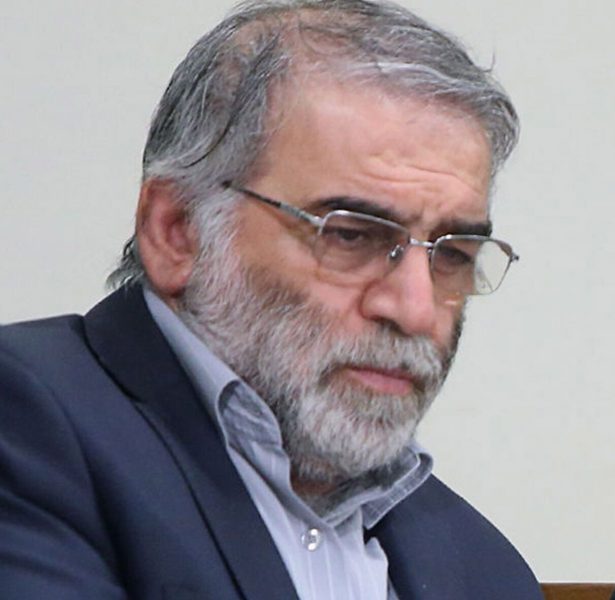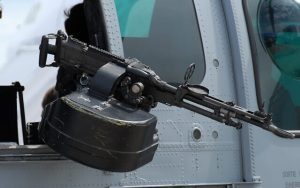
Minute planning, gizmos, AI: How Israel eliminates its 'enemies'
Convinced that Fakhrizadeh was leading Iran’s efforts to build a nuclear bomb, Israel had wanted to kill him since at least 2007. But there had been so many threats and plots that he no longer paid them much attention

The assassination of the “father” of Iran’s nuclear weapons programme in November 2020 was reportedly carried out by Israel’s intelligence agency, Mossad, in a hit that reportedly deployed a computerised machine gun and artificial intelligence AI).
The operation required no on-site operatives, took less than a minute, and did not injure anyone else, including the scientist Mohsen Fakhrizadeh’s wife, who was with him at the time.
According to an in-depth New York Times report published last Saturday, the weapon used in the assassination was a modified Belgian-made FN MAG machine gun attached to an advanced robotic apparatus and powered with AI. The device, weighing about a tonne, was smuggled into Iran in small parts ahead of the operation and then reassembled. The Mossad team handled the operation from a command centre outside the country.
The Times said the “straight-out-of-science-fiction” story of the killing was based on interviews with American, Israeli and Iranian officials, “including two intelligence officials familiar with the details of the planning and execution of the operation”.
The report said Iran’s intelligence service had warned Fakhrizadeh of a possible assassination plot, but the scientist had “brushed it off”. Convinced that Fakhrizadeh was leading Iran’s efforts to build a nuclear bomb, Israel had wanted to kill him since at least 2007. But there had been so many threats and plots that he no longer paid them much attention.
Preparations
The Israelis began making preparations for an assassination operation in late 2019 and early 2020, following a series of meetings between Israeli officials led by then-Mossad director Yossi Cohen and US officials, including then-president Donald Trump, his secretary of state Mike Pompeo and CIA director Gina Haspel.
By the summer of 2020, these preparations had gained momentum, driven by two factors: Iran’s tepid response to the January 2020 killing of its top general, Qassim Suleimani, in a US drone strike facilitated by Israeli intelligence; and the rising likelihood that Trump would lose the presidential election that November to Joe Biden, who had indicated he would return the US to the 2015 nuclear agreement with Iran.

“If Israel was going to kill a top Iranian official, an act that had the potential to start a war, it needed the assent and protection of the United States,” the Times reported, noting how much Trump and then-prime minister Benjamin Netanyahu “saw eye to eye”.
“In Mr. Netanyahu’s best-case scenario, the assassination would derail any chance of resurrecting the nuclear agreement even if Mr Biden won,” the report read.
Fakhrizadeh, 59, was a physicist, an officer in the Islamic Revolutionary Guard Corps and a professor at the Imam Hussein University in Tehran. He was killed on November 27, 2020, while en route with his wife from their holiday home on the Caspian Sea to their country house in Absard, east of Tehran. He was driving his own vehicle, a black Nissan Teana, with his wife sitting in the passenger seat and his bodyguards following in separate cars.

The computerised weapon was affixed to an abandoned-looking car, a blue Nissan Zamyad pickup, stationed by Iranian agents working with Mossad, at a junction on the main road where drivers heading for Absard had to make a U-turn, according to the report. The truck was laden with a camera and explosives so it could be destroyed after the hit.
When the team got word that Fakhrizadeh was heading out, “the assassin, a skilled sniper, took position, calibrated the gun sights, cocked the weapon and lightly touched the trigger” — from an “undisclosed location thousands of miles away.”
The hit team had to overcome several problems. “A machine gun mounted on a truck, even a parked one, will shake after each shot’s recoil, changing the trajectory of subsequent bullets,” the report said.
“Also, even though the computer communicated with the control room via satellite, sending data at the speed of light, there would be a slight delay: What the operator saw on the screen was already a moment old, and adjusting the aim to compensate would take another moment, all while Mr. Fakhrizadeh’s car was in motion.
“The time it took for the camera images to reach the sniper and for the sniper’s response to reach the machine gun, not including his reaction time, was estimated to be 1.6 seconds, enough of a lag for the best-aimed shot to go astray.
“The AI was programmed to compensate for the delay, the shake and the car’s speed,” it said.
Once Fakhrizadeh’s vehicle arrived at the junction, another vehicle with his bodyguards made way to the holiday home to inspect it before his arrival, leaving him exposed. The remaining convoy slowed for a speed bump just before the parked truck, at which point the operatives could positively identify Fakhrizadeh.
“The machine gun fired a burst of bullets, hitting the front of the car below the windshield. It is not clear if these shots hit Mr. Fakhrizadeh but the car swerved and came to a stop.
“The shooter adjusted the sights and fired another burst, hitting the windshield at least three times and Mr. Fakhrizadeh at least once in the shoulder. He stepped out of the car and crouched behind the open front door,” the report said.
The report quoted Iran’s Fars News as saying that “three more bullets tore into his spine. He collapsed on the road.”
The first bodyguard arrived at the scene with a weapon and “looked around for the assailant, seemingly confused.”
Fakhrizadeh’s wife ran to him. She sat on the ground and held his head on her lap, she told Iranian state television.
The blue Zamyed truck then exploded. That was the only part of the operation that did not go as planned, the Times said.
“The explosion was intended to rip the robot to shreds so the Iranians could not piece together what had happened. Instead, most of the equipment was hurled into the air and then fell to the ground, damaged beyond repair but largely intact.”
Iran’s assessment — that the attack was carried out by a remote-controlled machine gun “equipped with an intelligent satellite system” using AI — was correct, it said.
The operation took less than a minute. Fifteen bullets were fired, the Times said. No one else was hit or injured.
Hamed Fakhrizadeh was at the family home in Absard when he received a call from his mother. He arrived to find a scene of “full-on war”.
“It was not a simple terrorist attack for someone to come and fire a bullet and run,” he said later on state TV. “His assassination was far more complicated than what you know and think. He was unknown to the Iranian public, but he was very well known to those who are the enemy of Iran’s development.”

